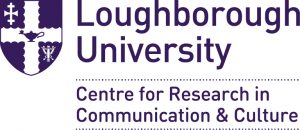
Dr Anthony Ridge-Newman
School of Social and Political Sciences, University of Glasgow.
Email: anthony.ridgenewman@gmail.com

Section 6: Parties
- The triumph and tribulations of Conservative Euroscepticism
- Celebrity politicians and populist media narratives: the case of Boris Johnson
- ‘Tuck your shirt in!’ It’s going to be a bumpy ride: Boris Johnson’s swerve to Brexit
- Cameron and the Europe question: Could it have ended any other way?
- The Liberal Democrats: the EU Referendum’s invisible party
- The Durham miners’ role in Labour’s culture wars
- The immigration debate: Labour versus Leave in the battle to win public trust
- The age of Nigel: Farage, the media, and Brexit
There were two clear sides of the 2016 EU Referendum: Leave versus Remain. Each campaign was constituted by activists from across the conventional political divide. However, the media largely seemed to fixate on the internal dynamics of the Conservative Party. The media framed much of the Referendum narrative around Conservative disunity, which was often portrayed as a ‘blue on blue’ civil war. At times, the extent of this coverage was such that the campaign appeared to be a largely Tory affair. For example, two days before the Referendum, the BBC television’s Daily Politics show gave over a prominent slot to a segment entitled ‘Conservative Party Future?’. Items like this reflected a seemingly dominant narrative of the media’s Referendum coverage.
(There is)… need for more well-informed debate amid quality information. Speculative news discourse has played an unhelpful and misleading role in dominating wider campaign narratives. In referenda and elections, the central role of the media ought to be to facilitate the electorate’s access to quality information and analysis
The news media addressed a diverse mix of issues during the Referendum but at times the three main UK news broadcasting networks- BBC, ITN and Sky- appeared noticeably more preoccupied with speculating overthe internal dynamics and future of the Conservative Party than they perhaps ought to have.
The nature of the news reported feeds into the wider normative question about the role media should play in election campaigns and referenda. It seems pertinent to ask whether the more speculative aspects witnessed in this kind of coverage is necessary? Rather the media should focus on providing more quality factual information and expert analysis and thereby resist the allure of sensationalised politics and speculation, because it can often be misguided and misleading.
In recent years media speculation over the likely outcome of campaigns has been driven by misleading polls. The UK’s 2015 General Election is a prime example where the news framed its discourse based on information of questionable accuracy which encouraged coverage of red herrings and distractions. With successive polls suggesting the electorate would vote for another coalition government the media narrative largely centred on what such a partnership might look like. Conversely journalists took a more superficial approach when representing and analysing party manifestos. The subsequent Tory victory highlighted just how that the media had been overly preoccupied by misleading polls that fostered misguided coverage and agendas.
In the Referendum the polls generally and incorrectly predicted a Remain victory. Therefore the media tended to focus on a narrative asto what happens to a deeply divided Conservative Party after the vote. This was informed by an assumption that there would be a continuance of the status quo that provided a misguided frame and context for the ensuing discussion. It was only when the UK voted Leave and David Cameron resigned that the media narrative shifted sharply away from Conservative disunity to focus on divisions within the electorate and regions of the UK as well as the ‘meltdown’ in the Labour Party; and a disunited Britain.
Aside from misleading polls why were media pre-Referendum assumptions about divisions in the Conservative Party so misguided? Academics have a potentially important role in challenging and improving journalistic understandings of politics. For example, when speculating over the survival of the Conservative Party, journalists ought to consider more of the context including, in this case, a 350 year history as the oldest extant, and arguably most successful, political party in Western democracy. The Party is known for its pragmatism and ability to adapt, change and endure through wider social, political and cultural changes with historian Richard Cockett likenening it to a ‘Darwinian’ organism that adapts to survive.
Over its long history, the Party’s pragmatism has tended to trump ideological divides and thereby encourage a display of party unity of the kind generally recognised to be key to electoral success.
In contrast to the Conservatives the Labour Party has been historically characterised by its ideological commitments that have rendered it less inclined to take pragmatic steps towards preserving party unity. The aftermath of the Referendum is one such example. Cameron’s resignation reinforced the appearance of a revival in Conservative Party unity.
In terms of the post-Referendum media narrative, the blue on blue civil war evaporated to be replaced by a more accurate portrayal of the divisions in Labour under Jeremy Corbyn. These fractures are driven by much wider and deeper ideological fissures than those of the Conservatives whose historic divisions over Britain’s membership of the EU has been more of a single issue. Yet comparatively little of pre-referendum media speculation and analysis focused on the future of the Labour Party. This demonstrates a need for more well-informed debate amid quality information. Speculative news discourse has played an unhelpful and misleading role in dominating wider campaign narratives. In referenda and elections, the central role of the media ought to be to facilitate the electorate’s access to quality information and analysis. A greater exchange of knowledge between media practitioners, academics and experts during campaigns might contribute to more credible coverage of politics in Britain.


